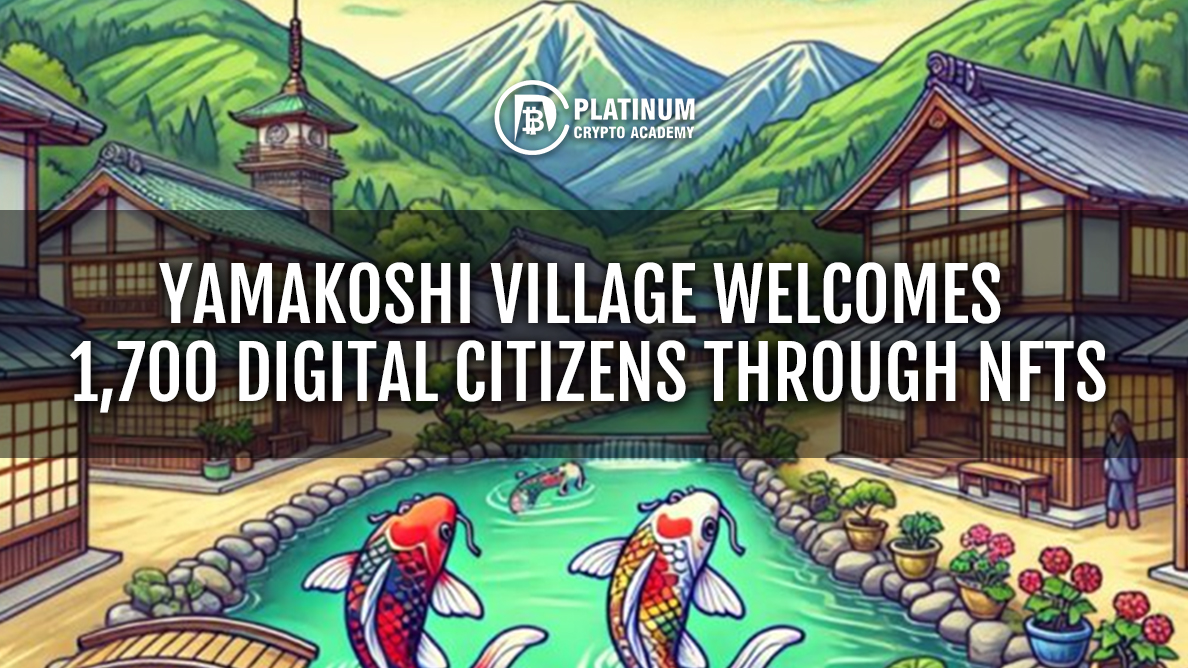Nestled in the serene Niigata mountains of Japan, the secluded village of Yamakoshi has found a novel way to support and sustain its aging population. Through the sale of non-fungible tokens (NFTs), Yamakoshi has attracted 1,700 “digital citizens” and raised significant funds for community initiatives.
The Neo-Yamakoshi Village Project
The Neo-Yamakoshi Village project, driven by local residents, is the force behind this innovative initiative. The project manages the Nishikigoi NFT collection, named after the vibrant koi carp breed, which is highly valued in Japanese culture. These digital assets serve a dual purpose: they identify Yamakoshi’s digital citizens and act as governance tokens, enabling participation in the village’s decentralized autonomous organization (DAO) voting processes.
Raising Funds Through NFTs
Since its launch in 2021, the Neo-Yamakoshi Village project has raised over $423,000 through the sale of Nishikigoi NFTs, according to a recent report by Japanese research and consulting firm Yuri Group. The proceeds have been used to fund various community initiatives, such as organizing a sports day for local school children.

Free NFTs for Residents, Purchase for Digital Citizens
For residents physically located in Yamakoshi, Nishikigoi tokens are free. However, those wishing to become part of the digital community must purchase these tokens. As of June 26, the floor price for a Nishikigoi NFT is 0.0318 Ether on the NFT marketplace Magic Eden.
A Unique Approach to Supporting Aging Populations
While NFT technology alone is not a direct solution to Japan’s record-low birth rate, it offers a unique and experimental approach to raising funds for aging populations in isolated rural communities. Yuri Group’s report suggests that if this strategy succeeds and expands to other villages, rural Japan could potentially raise around half a billion dollars. This approach also serves as a test for new social technologies with global appeal.
Challenges and Hurdles
Despite its potential, the Neo-Yamakoshi Village project has faced several challenges. One significant hurdle has been explaining the benefits of the technology to older adults in the village. The project manager reported difficulties in demonstrating the DAO voting process, leading to low voter turnout among residents. Additionally, overseas digital citizens have encountered language barriers, complicating their participation.
Global NFT Market Trends
The project’s progress comes amidst a downturn in global NFT trading volumes. According to CryptoSlam data, global NFT sales volume is on track to decline by 45% in the second quarter of 2024, with June expected to be the worst-performing month since October 2023. NFT market capitalization, largely dominated by collectibles and avatars, dropped by 31.5% in the three months leading to June 26, as reported by NFTGo.
A Unique Fit for Japan’s Culture
Despite the decline in global NFT trading activity, there remains optimism about the potential of NFTs in Japan. Will Fee, a researcher at Yuri Group, pointed out that Japan’s rich culture of anime, manga, and physical collectibles positions it well for NFT adoption. He noted that Yamakoshi’s digital citizens often use anime-style avatars, indicating a blend of playful and socially impactful applications of the technology.
Support from the Japanese Government
The Neo-Yamakoshi Village project has also garnered support from the Japanese government. Prime Minister Fumio Kishida’s administration views Web3 as a key element in achieving “Society 5.0,” a plan aimed at creating a more sustainable and advanced society through the integration of technologies like artificial intelligence, the Internet of Things, and big data. To this end, the ruling Liberal Democratic Party granted the Neo-Yamakoshi Village project 10 million yen (approximately $62,500) to test and implement Web3 tools.
Addressing Japan’s Demographic Challenges
The initiative is particularly relevant given Japan’s demographic challenges. In April, the Population Strategy Council, a private sector group, reported that 40% of Japan’s 1,729 municipalities are at risk of disappearing due to declining birth rates. Projects like Neo-Yamakoshi Village could provide a model for other rural areas seeking innovative solutions to support their aging populations and maintain community vitality.
The Future of Web3 in Rural Japan
Looking ahead, the success of the Neo-Yamakoshi Village project could inspire other rural communities in Japan to adopt similar strategies. By leveraging the power of Web3 and NFTs, these communities can raise funds, engage digital citizens, and experiment with new social technologies that offer both practical and playful applications.
Conclusion
The Neo-Yamakoshi Village project represents a bold and innovative approach to addressing the challenges faced by aging rural communities in Japan. By combining traditional cultural elements with cutting-edge technology, the project has not only raised substantial funds but also fostered a sense of global community among its digital citizens. As Web3 technologies continue to evolve, the experiences and lessons learned from Yamakoshi could pave the way for similar initiatives worldwide, demonstrating the potential of NFTs and decentralized governance to create meaningful social impact.



